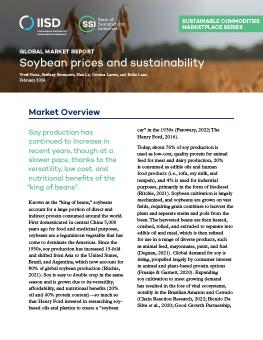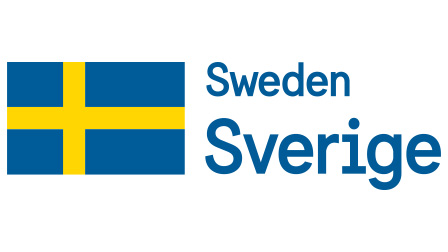
Global Market Report: Soybean prices and sustainability
Less than 3% of soybeans are produced in compliance with sustainability standards. This report unpacks what needs to change to make soybeans a food that protects rather than harms the natural environment.
-
The global soybean sector has experienced rapid growth in the past 5 decades and is now worth USD 155 billion. It is projected to reach USD 278 billion by 2031.
-
Less than 3% of soybeans are produced in compliance with sustainability standards, but the persistently slow growth in standard-compliant production appears to be accelerating.
-
Organic soybean producers in major exporting countries may have received prices 64% higher than those selling conventional, genetically modified soybeans in 2017.
Soybeans serve as an important source of protein for both humans and animals thanks to their versatility, affordability, and nutritional benefits. Around three quarters of soybean production is used for animal feed, and a fifth is consumed as edible oils and food products.
The global soybean sector has experienced rapid growth in the past 5 decades. But the sector is both vulnerable to and a driver of critical sustainability challenges, including deforestation, biodiversity loss, and climate change. Establishing deforestation-free supply chains is critical to ensuring the sector sustains and nourishes us without harming the natural environment that it relies on.
Voluntary sustainability standards (VSSs) such as the Round Table on Responsible Soy (RTRS), ProTerra Foundation, and Organic have been working to address sustainability challenges in the soybean sector for the past 3 decades. They support and promote practices that can help soybean farmers and workers preserve vital ecosystems and build resilience to climate impacts.
Becoming certified can also help soybean farmers negotiate higher prices or premiums with buyers. But the processing and trading of soybeans are controlled by a few multinational companies that operate at a pinch point in the value chain. They can buy from a wide range of producers and sell to an equally wide range of consumers. These powerful actors hold all the power, whereas farmers bear most of the financial and environmental risks of production—as well as the costs of certification.
While pursuing certification can improve farmers’ productivity, help them save costs on inputs, and provide them with access to finance, more direct financial incentives are needed to motivate more farmers to get on board. This report provides recommendations for how governments, private sector actors, and standard-setting bodies can work together to reward farmers for using sustainable practices and better distribute the costs of production and certification throughout the value chain
Funded by
You might also be interested in
Global Market Report: Tea prices and sustainability
This report explores recent market trends in the tea sector and explains why we need to get better at recognizing the social and environmental costs of tea production.
South-South Trade and Voluntary Sustainability Standards
This report explores how voluntary sustainability standards are being used in trade policy to increase the trade of more sustainable products between developing countries.
Global Market Report: Sugar cane prices and sustainability
This report explores recent market trends in the sugar cane sector, what these trends mean for producers in developing countries, and what can be done to improve farmers' incomes.
Global Market Report: Palm oil prices and sustainability
This report unpacks market trends in the palm oil sector and examines the role of sustainability standards in ensuring farmers receive fair incomes and adopt sustainable practices.
